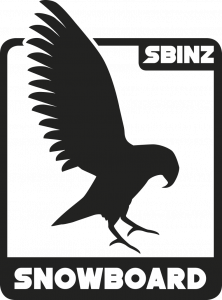Flexed-Edge-Change Turns
 What, Why, How
What, Why, How

VIDEO: Advanced Turns with Greg Samson
 Movements & Board Performance
Movements & Board Performance
Vertical & Pressuring
The timing of vertical movement is the key to changing between these two types of turns. In flexed-edge-change turns, the rider is at their smallest point at the edge change. This is followed with an extension of the legs to help increase edge grip and pressure on the snowboard throughout control and completion. The rider then flexes again to allow the body to move down towards the snowboard, to help flatten it and initiate the next turn. In extended-edge-change turns, the rider is at their tallest point for the edge change. This is followed by flexing throughout control and completion of the turn, which can help to manage pressure and blend with lower body steering. The rider then extends to release the uphill edge, flatten the snowboard and initiate the next turn.
Lateral & Edging
The change in sequence means that with flexed-edge-change turns, the rider moves their COM away from the base of support laterally to increase the edge angle. With extended-edge-change turns the rider is able to keep their COM closer to the base of support when increasing edge angle.
Rotational & Steering
Rotational movement from the lower body is easier to achieve when flexing, as the knee creates a lever, thus steering can be more efficient. Note that a separated relationship between the upper and lower body may develop during flexed-edge-change turns.
Longitudinal
The rider should initially focus on a centred position throughout the turn when learning the difference in sequence here. Fore and aft movements can be introduced with either turn type to adapt turns to variable conditions such as bumps, steeps or powder.
 Terrain & Group Management
Terrain & Group Management
When using pivot slips, setting an imaginary corridor can be very useful. Or even better, use a snowmobile track and ensure that every time they come back to the sideslip their board is across the track. As soon as they move out of the track, they must flex before the nose steers down the hill.

